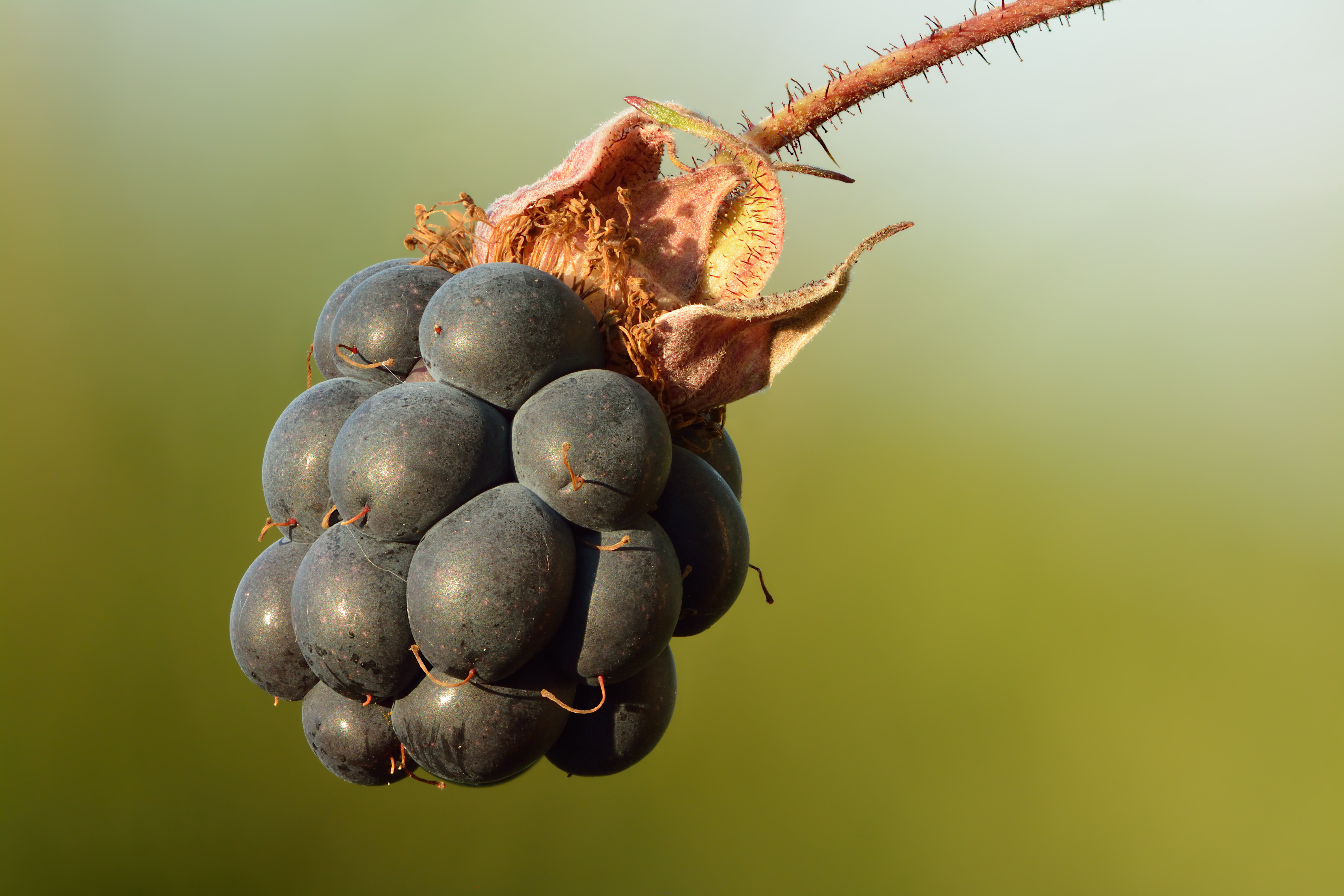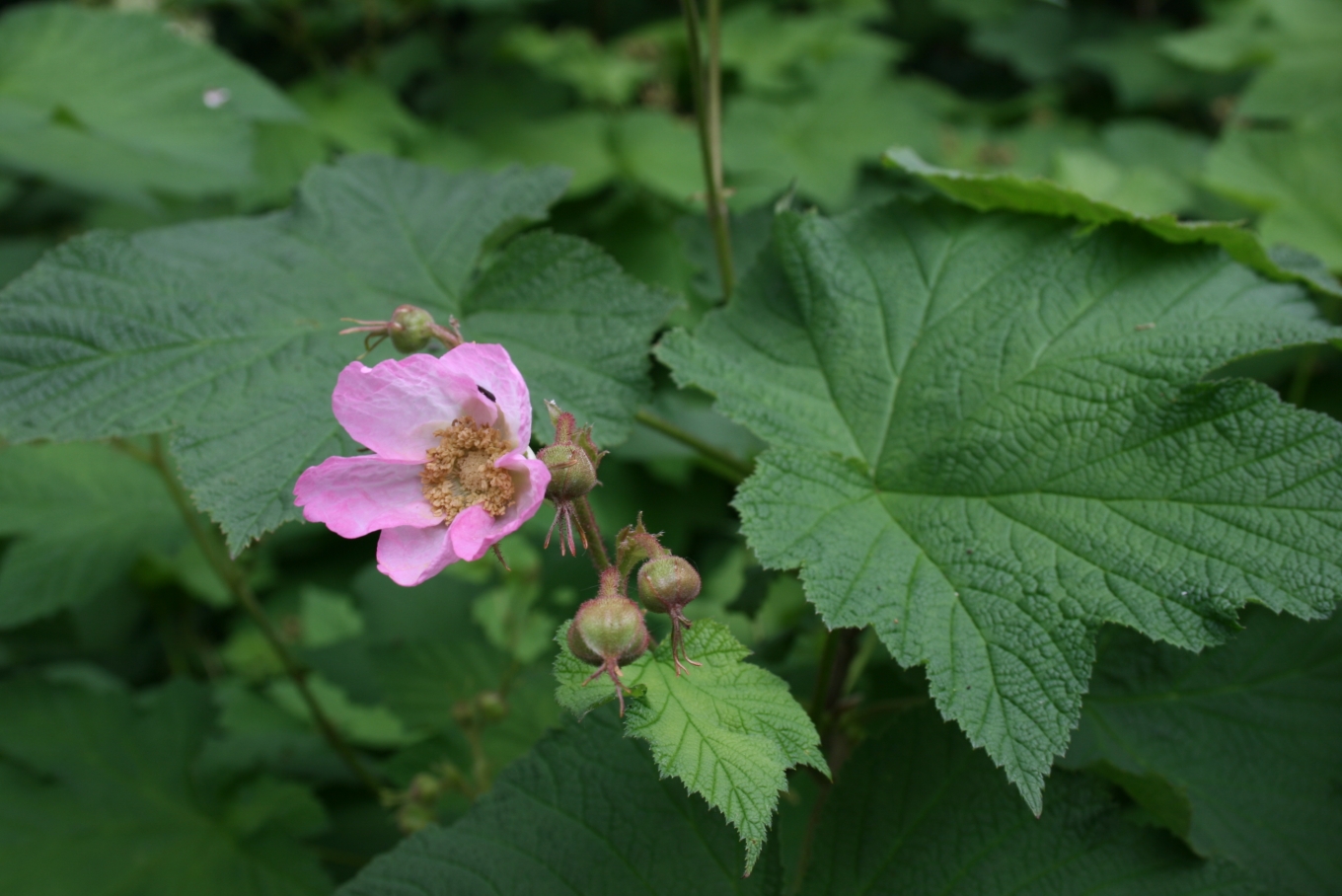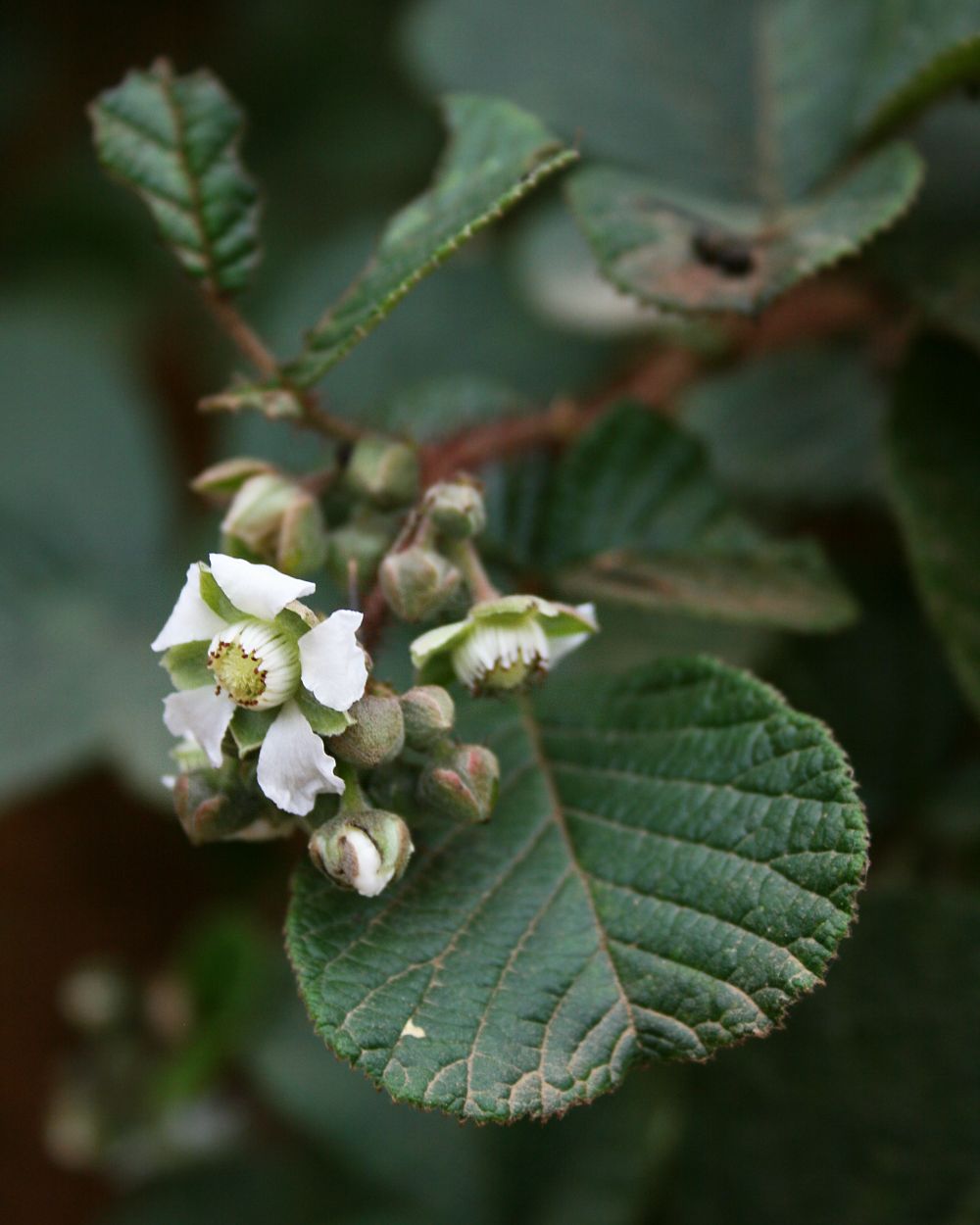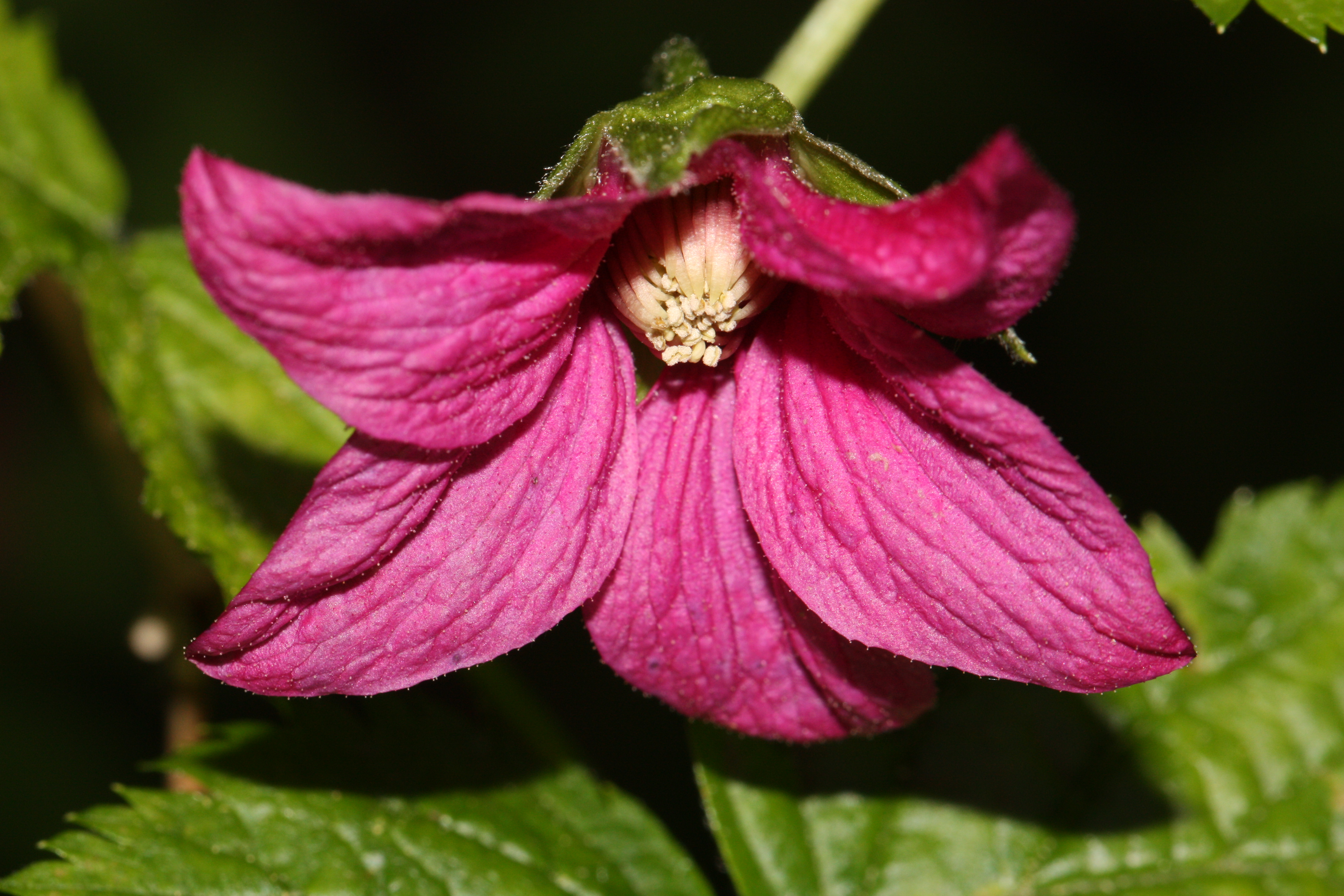Rubus on:
[Wikipedia]
[Google]
[Amazon]
''Rubus'' is a large and diverse









 Better-known species of ''Rubus'' include:
*'' Rubus aboriginum'' – garden dewberry
*'' Rubus allegheniensis'' – Allegheny blackberry
*'' Rubus arcticus'' – Arctic raspberry
*'' Rubus argutus''-sawtooth raspberry
*'' Rubus armeniacus'' – Himalayan blackberry
*'' Rubus caesius'' – European dewberry
*'' Rubus canadensis'' – smooth blackberry
*'' Rubus chamaemorus'' – cloudberry
*'' Rubus cockburnianus'' – white-stemmed bramble
*'' Rubus coreanus'' – bokbunja
*'' Rubus crataegifolius''
*'' Rubus deliciosus''
*'' Rubus domingensis''
*'' Rubus ellipticus''
*'' Rubus flagellaris'' – northern dewberry
*'' Rubus fraxinifolius'' – mountain raspberry
*'' Rubus glaucus''
*'' Rubus hawaiensis''
*'' Rubus hispidus'' – swamp dewberry
*''
Better-known species of ''Rubus'' include:
*'' Rubus aboriginum'' – garden dewberry
*'' Rubus allegheniensis'' – Allegheny blackberry
*'' Rubus arcticus'' – Arctic raspberry
*'' Rubus argutus''-sawtooth raspberry
*'' Rubus armeniacus'' – Himalayan blackberry
*'' Rubus caesius'' – European dewberry
*'' Rubus canadensis'' – smooth blackberry
*'' Rubus chamaemorus'' – cloudberry
*'' Rubus cockburnianus'' – white-stemmed bramble
*'' Rubus coreanus'' – bokbunja
*'' Rubus crataegifolius''
*'' Rubus deliciosus''
*'' Rubus domingensis''
*'' Rubus ellipticus''
*'' Rubus flagellaris'' – northern dewberry
*'' Rubus fraxinifolius'' – mountain raspberry
*'' Rubus glaucus''
*'' Rubus hawaiensis''
*'' Rubus hispidus'' – swamp dewberry
*''
''Rubus''
at the Western Kentucky University {{Authority control Rosaceae genera Subshrubs Extant Eocene first appearances
genus
Genus (; : genera ) is a taxonomic rank above species and below family (taxonomy), family as used in the biological classification of extant taxon, living and fossil organisms as well as Virus classification#ICTV classification, viruses. In bino ...
of flowering plants in the rose family, Rosaceae
Rosaceae (), the rose family, is a family of flowering plants that includes 4,828 known species in 91 genera.
The name is derived from the type genus '' Rosa''. The family includes herbs, shrubs, and trees. Most species are deciduous, but som ...
, subfamily Rosoideae, most commonly known as brambles. Fruits of various species are known as raspberries, blackberries, dewberries, and bristleberries. It is a diverse genus, with the estimated number of ''Rubus'' species varying from 250 to over 1000, found across all continents except Antarctica.
Most of these plants have woody stems with prickles like roses; spines, bristles, and gland-tipped hairs are also common in the genus. The ''Rubus'' fruit
In botany, a fruit is the seed-bearing structure in flowering plants (angiosperms) that is formed from the ovary after flowering.
Fruits are the means by which angiosperms disseminate their seeds. Edible fruits in particular have long propaga ...
, sometimes called a bramble fruit, is an aggregate of drupelets. The term ''cane fruit'' or ''cane berry'' applies to any ''Rubus'' species or hybrid which is commonly grown with supports such as wires or canes, including raspberries, blackberries, and hybrids such as loganberry, boysenberry, marionberry and tayberry. The stems of such plants are also referred to as ''canes''.
Description
Bramble bushes typically grow asshrub
A shrub or bush is a small to medium-sized perennial woody plant. Unlike herbaceous plants, shrubs have persistent woody stems above the ground. Shrubs can be either deciduous or evergreen. They are distinguished from trees by their multiple ...
s (though a few are herbaceous
Herbaceous plants are vascular plants that have no persistent woody stems above ground. This broad category of plants includes many perennials, and nearly all annuals and biennials.
Definitions of "herb" and "herbaceous"
The fourth edition of ...
), with their stems being typically covered in sharp prickles. They grow long, arching shoots that readily root upon contact with soil, and form a soil rootstock from which new shoots grow in the spring. The leaves are either evergreen
In botany, an evergreen is a plant which has Leaf, foliage that remains green and functional throughout the year. This contrasts with deciduous plants, which lose their foliage completely during the winter or dry season. Consisting of many diffe ...
or deciduous
In the fields of horticulture and botany, the term deciduous () means "falling off at maturity" and "tending to fall off", in reference to trees and shrubs that seasonally shed Leaf, leaves, usually in the autumn; to the shedding of petals, aft ...
, and simple
Simple or SIMPLE may refer to:
*Simplicity, the state or quality of being simple
Arts and entertainment
* ''Simple'' (album), by Andy Yorke, 2008, and its title track
* "Simple" (Florida Georgia Line song), 2018
* "Simple", a song by John ...
, lobed, or compound. The shoots typically do not flower or set fruit
In botany, a fruit is the seed-bearing structure in flowering plants (angiosperms) that is formed from the ovary after flowering.
Fruits are the means by which angiosperms disseminate their seeds. Edible fruits in particular have long propaga ...
until the second year of growth (i.e. they are biennial). The rootstock is perennial
In horticulture, the term perennial ('' per-'' + '' -ennial'', "through the year") is used to differentiate a plant from shorter-lived annuals and biennials. It has thus been defined as a plant that lives more than 2 years. The term is also ...
. Most species
A species () is often defined as the largest group of organisms in which any two individuals of the appropriate sexes or mating types can produce fertile offspring, typically by sexual reproduction. It is the basic unit of Taxonomy (biology), ...
are hermaphrodites with male and female parts being present on the same flower. Bramble fruits are aggregate fruits formed from smaller units called drupe
In botany, a drupe (or stone fruit) is a type of fruit in which an outer fleshy part (exocarp, or skin, and mesocarp, or flesh) surrounds a single shell (the ''pip'' (UK), ''pit'' (US), ''stone'', or ''pyrena'') of hardened endocarp with a seed ...
lets.
Around 60-70% of species of ''Rubus'' are polyploid
Polyploidy is a condition in which the biological cell, cells of an organism have more than two paired sets of (Homologous chromosome, homologous) chromosomes. Most species whose cells have Cell nucleus, nuclei (eukaryotes) are diploid, meaning ...
(having more than two copies of each chromosome), with species ranging in ploidy from diploid
Ploidy () is the number of complete sets of chromosomes in a cell, and hence the number of possible alleles for autosomal and pseudoautosomal genes. Here ''sets of chromosomes'' refers to the number of maternal and paternal chromosome copies, ...
(2x, with 14 chromosomes) to tetradecaploid (14x).
Taxonomy
Modern classification
''Rubus'' is the only genus in the tribe Rubeae. ''Rubus'' is very complex, particularly within theblackberry
BlackBerry is a discontinued brand of handheld devices and related mobile services, originally developed and maintained by the Canadian company Research In Motion (RIM, later known as BlackBerry Limited) until 2016. The first BlackBerry device ...
/ dewberry subgenus
In biology, a subgenus ( subgenera) is a taxonomic rank directly below genus.
In the International Code of Zoological Nomenclature, a subgeneric name can be used independently or included in a species name, in parentheses, placed between the ge ...
(''Rubus''), with polyploidy, hybridization, and facultative apomixis apparently all frequently occurring, making species classification
Classification is the activity of assigning objects to some pre-existing classes or categories. This is distinct from the task of establishing the classes themselves (for example through cluster analysis). Examples include diagnostic tests, identif ...
of the great variation in the subgenus one of the grand challenges of systematic botany. In publications between 1910 and 1914, German botanist Wilhelm Olbers Focke attempted to organize the genus into 12 subgenera, a classification system that since became widely accepted, though modern genetic studies have found that many of these subgenera are not monophyletic
In biological cladistics for the classification of organisms, monophyly is the condition of a taxonomic grouping being a clade – that is, a grouping of organisms which meets these criteria:
# the grouping contains its own most recent co ...
.
Some treatments have recognized dozens of species each for what other, comparably qualified botanists have considered single, more variable species. On the other hand, species in the other ''Rubus'' subgenera (such as the raspberries) are generally distinct, or else involved in more routine one-or-a-few taxonomic debates, such as whether the European and American red raspberries are better treated as one species or two (in this case, the two-species view is followed here, with '' R. idaeus'' and '' R. strigosus'' both recognized; if these species are combined, then the older name ''R. idaeus'' has priority for the broader species).
The classification presented below recognizes 13 subgenera within ''Rubus'', with the largest subgenus (''Rubus'') in turn divided into 12 sections. Representative examples are presented, but many more species are not mentioned here. A comprehensive 2019 study found subgenera ''Orobatus'' and ''Anoplobatus'' to be monophyletic
In biological cladistics for the classification of organisms, monophyly is the condition of a taxonomic grouping being a clade – that is, a grouping of organisms which meets these criteria:
# the grouping contains its own most recent co ...
, while all other subgenera to be paraphyletic
Paraphyly is a taxonomic term describing a grouping that consists of the grouping's last common ancestor and some but not all of its descendant lineages. The grouping is said to be paraphyletic ''with respect to'' the excluded subgroups. In co ...
or polyphyletic
A polyphyletic group is an assemblage that includes organisms with mixed evolutionary origin but does not include their most recent common ancestor. The term is often applied to groups that share similar features known as Homoplasy, homoplasies ...
.
Phylogeny
The genus has a likely North American origin, with fossils known from theEocene
The Eocene ( ) is a geological epoch (geology), epoch that lasted from about 56 to 33.9 million years ago (Ma). It is the second epoch of the Paleogene Period (geology), Period in the modern Cenozoic Era (geology), Era. The name ''Eocene'' comes ...
-aged Florissant Formation of Colorado, around 34 million years old. ''Rubus'' expanded into Eurasia, South America, and Oceania during the Miocene
The Miocene ( ) is the first epoch (geology), geological epoch of the Neogene Period and extends from about (Ma). The Miocene was named by Scottish geologist Charles Lyell; the name comes from the Greek words (', "less") and (', "new") and mea ...
. Fossil
A fossil (from Classical Latin , ) is any preserved remains, impression, or trace of any once-living thing from a past geological age. Examples include bones, shells, exoskeletons, stone imprints of animals or microbes, objects preserve ...
seeds from the early Miocene
The Miocene ( ) is the first epoch (geology), geological epoch of the Neogene Period and extends from about (Ma). The Miocene was named by Scottish geologist Charles Lyell; the name comes from the Greek words (', "less") and (', "new") and mea ...
of ''Rubus'' have been found in the Czech part of the Zittau Basin. Many fossil fruits of †''Rubus laticostatus'', †''Rubus microspermus'' and †''Rubus semirotundatus'' have been extracted from bore hole samples of the Middle Miocene
The Middle Miocene is a sub-epoch of the Miocene epoch (geology), epoch made up of two Stage (stratigraphy), stages: the Langhian and Serravallian stages. The Middle Miocene is preceded by the Early Miocene.
The sub-epoch lasted from 15.97 ± 0. ...
fresh water deposits in Nowy Sacz Basin, West Carpathians, Poland
Poland, officially the Republic of Poland, is a country in Central Europe. It extends from the Baltic Sea in the north to the Sudetes and Carpathian Mountains in the south, bordered by Lithuania and Russia to the northeast, Belarus and Ukrai ...
.
Molecular data have backed up classifications based on geography and chromosome number, but following morphological data, such as the structure of the leaves and stems, do not appear to produce a phylogenetic classification.
Species







 Better-known species of ''Rubus'' include:
*'' Rubus aboriginum'' – garden dewberry
*'' Rubus allegheniensis'' – Allegheny blackberry
*'' Rubus arcticus'' – Arctic raspberry
*'' Rubus argutus''-sawtooth raspberry
*'' Rubus armeniacus'' – Himalayan blackberry
*'' Rubus caesius'' – European dewberry
*'' Rubus canadensis'' – smooth blackberry
*'' Rubus chamaemorus'' – cloudberry
*'' Rubus cockburnianus'' – white-stemmed bramble
*'' Rubus coreanus'' – bokbunja
*'' Rubus crataegifolius''
*'' Rubus deliciosus''
*'' Rubus domingensis''
*'' Rubus ellipticus''
*'' Rubus flagellaris'' – northern dewberry
*'' Rubus fraxinifolius'' – mountain raspberry
*'' Rubus glaucus''
*'' Rubus hawaiensis''
*'' Rubus hispidus'' – swamp dewberry
*''
Better-known species of ''Rubus'' include:
*'' Rubus aboriginum'' – garden dewberry
*'' Rubus allegheniensis'' – Allegheny blackberry
*'' Rubus arcticus'' – Arctic raspberry
*'' Rubus argutus''-sawtooth raspberry
*'' Rubus armeniacus'' – Himalayan blackberry
*'' Rubus caesius'' – European dewberry
*'' Rubus canadensis'' – smooth blackberry
*'' Rubus chamaemorus'' – cloudberry
*'' Rubus cockburnianus'' – white-stemmed bramble
*'' Rubus coreanus'' – bokbunja
*'' Rubus crataegifolius''
*'' Rubus deliciosus''
*'' Rubus domingensis''
*'' Rubus ellipticus''
*'' Rubus flagellaris'' – northern dewberry
*'' Rubus fraxinifolius'' – mountain raspberry
*'' Rubus glaucus''
*'' Rubus hawaiensis''
*'' Rubus hispidus'' – swamp dewberry
*''Rubus idaeus
''Rubus idaeus'' (raspberry, also called red raspberry or occasionally European red raspberry to distinguish it from other raspberry species) is a red-fruited species of ''Rubus'' native to Europe and northern Asia and commonly cultivated in oth ...
'' – red raspberry
*'' Rubus illecebrosus''
*'' Rubus laciniatus'' – cut-leaved blackberry
*'' Rubus leucodermis'' – whitebark raspberry
*'' Rubus moluccanus''
*'' Rubus nepalensis''
*'' Rubus nivalis'' – snow raspberry
*'' Rubus niveus''
*'' Rubus occidentalis'' – black raspberry
*'' Rubus odoratus'' – purple-flowered raspberry
*'' Rubus parviflorus'' – thimbleberry
*'' Rubus pedatus''
*'' Rubus pensilvanicus'' – Pennsylvania blackberry
*'' Rubus phoenicolasius'' – wineberry
*'' Rubus probus''
*'' Rubus pubescens'' – dwarf raspberry
*'' Rubus rosifolius''
*'' Rubus saxatilis'' – stone bramble
*'' Rubus spectabilis'' – salmonberry
*'' Rubus tricolor''
*'' Rubus trivialis'' – Southern dewberry
*'' Rubus ulmifolius'' – elm-leaved blackberry
*'' Rubus ursinus'' – trailing blackberry
*'' Rubus vestitus'' – European blackberry
A more complete subdivision is as follows:
Hybrid berries
The term "hybrid berry" is often used collectively for those fruits in the genus ''Rubus'' which have been developed mainly in the U.S. and U.K. in the last 130 years. As ''Rubus'' species readily interbreed and are apomicts (able to set seed without fertilisation), the parentage of these plants is often highly complex, but is generally agreed to include cultivars of blackberries (''R. ursinus'', ''R. fruticosus'') and raspberries (''R. idaeus''). The British National Collection of ''Rubus'' stands at over 200 species and, although not within the scope of the National Collection, also hold many cultivars. The hybrid berries include:- * loganberry (California, U.S., 1883) ''R.'' ×''loganobaccus'', a spontaneous hybrid between ''R. ursinus'' 'Aughinbaugh' and ''R. idaeus'' 'Red Antwerp' * boysenberry (U.S., 1920s) a hybrid between ''R. idaeus'' and ''R.'' × ''loganobaccus'' * nectarberry Suspected variant of boysenberry, a hybrid between ''R. idaeus'' and ''R.'' × ''loganobaccus'' * olallieberry (U.S., 1930s) a hybrid between the loganberry and youngberry, themselves both hybrid berries * veitchberry (Europe, 1930s) a hybrid between ''R. fruticosus'' and ''R. idaeus'' * skellyberry (Texas, U.S., 2000s), a hybrid between ''R. invisus'' and ''R. phoenicolasius'' * marionberry (1956) now thought to be a blackberry cultivar ''R.'' 'Marion' * silvanberry, ''R.'' 'Silvan', a hybrid between ''R.'' 'Marion' and the boysenberry * tayberry (Dundee, Scotland, 1979), another blackberry/raspberry hybrid * tummelberry, ''R.'' 'Tummel', from the same Scottish breeding programme as the tayberry * hildaberry (1980s), a tayberry/boysenberry hybrid discovered by an amateur grower * youngberry, a complex hybrid of raspberries, blackberries, and dewberriesEtymology
The generic name means blackberry inLatin
Latin ( or ) is a classical language belonging to the Italic languages, Italic branch of the Indo-European languages. Latin was originally spoken by the Latins (Italic tribe), Latins in Latium (now known as Lazio), the lower Tiber area aroun ...
and was derived from the word ''ruber'', meaning "red".
The blackberries, as well as various other ''Rubus'' species with mounding or rambling growth habits, are often called brambles. However, this name is not used for those like the raspberry that grow as upright canes, or for trailing or prostrate species, such as most dewberries, or various low-growing boreal, arctic, or alpine species. The scientific study of brambles is known as " batology".
"Bramble" comes from Old English ''bræmbel'', a variant of ''bræmel''.
See also
* Mulberry, an unrelated deciduous tree with similar looking fruitReferences
External links
*''Rubus''
at the Western Kentucky University {{Authority control Rosaceae genera Subshrubs Extant Eocene first appearances